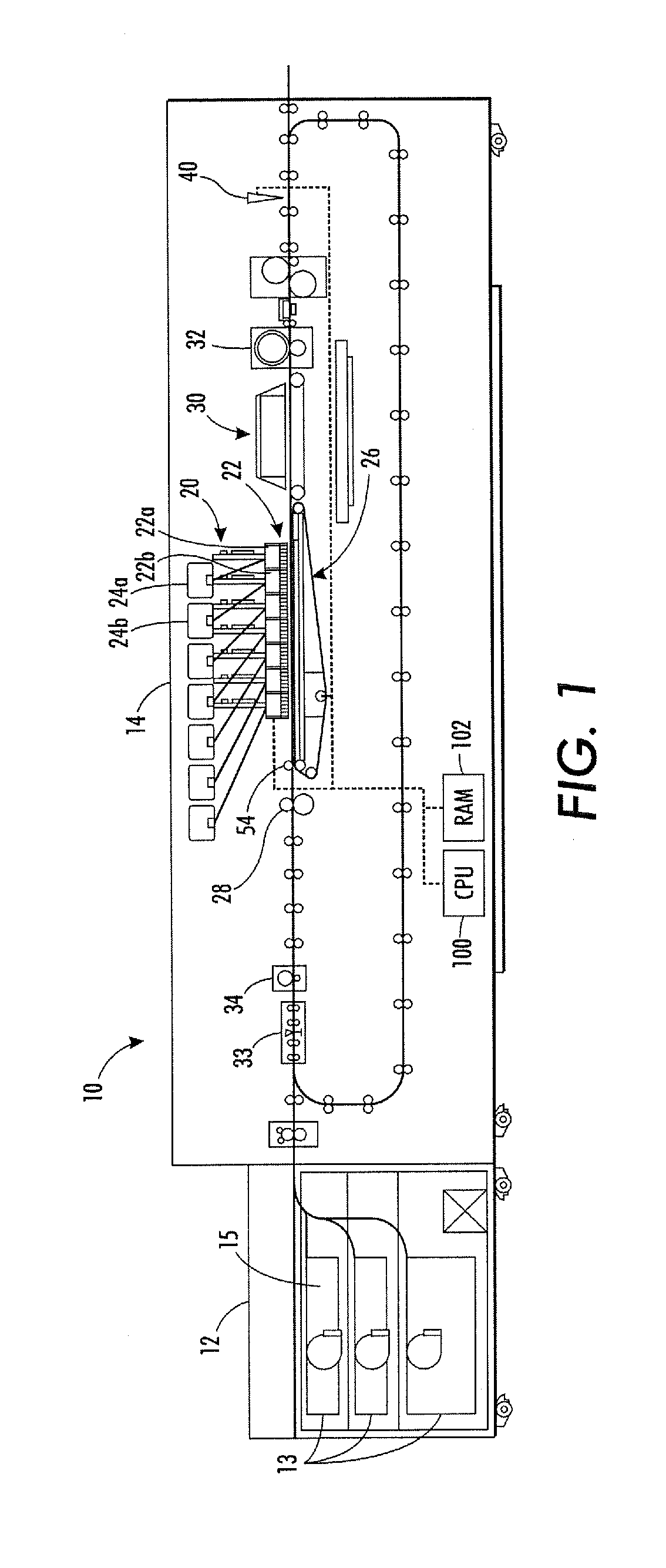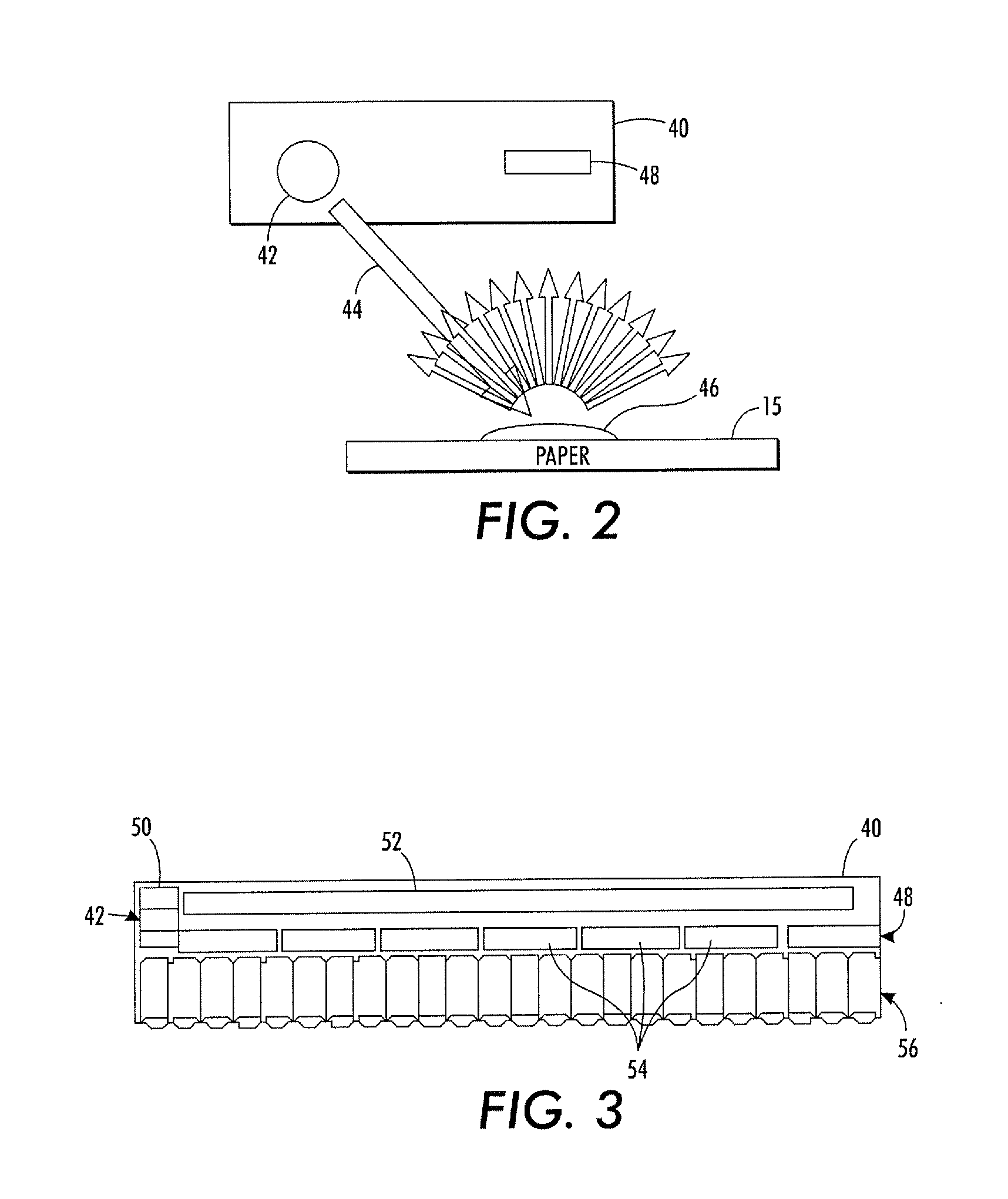Indirect media flatness measurement
a technology of indirect media and flatness measurement, applied in the direction of printing, other printing apparatus, etc., can solve the problems of insufficient flatness of sheets in printing zones, inability to hold media flatness past the ink jet aperture printing array, and difficulty in printing head-to-media tolerances
- Summary
- Abstract
- Description
- Claims
- Application Information
AI Technical Summary
Benefits of technology
Problems solved by technology
Method used
Image
Examples
Embodiment Construction
Introduction
[0027]As used herein, a “printer” refers to any device, machine, apparatus, and the like, for forming images on substrate media using ink, toner, and the like. A “printer” can encompass any apparatus, such as a copier, bookmaking machine, facsimile machine, multi-function machine, etc., which performs a print outputting function for any purpose. Where a monochrome printer is described, it will be appreciated that the disclosure can encompass a printing system that uses more than one color (e.g., red, blue, green, black, cyan, magenta, yellow, clear, etc.) ink or toner to form a multiple-color image on a substrate media.
[0028]As used herein, “substrate media” refers to a tangible medium, such as paper (e.g., a cut sheet of paper, a continuous web of paper, a ream of paper, etc.), transparencies, parchment, film, fabric, plastic, vellum, paperboard, up to between about 26 and 29 point (i.e., about 0.026-0.029 in. thickness), or other substrates on which an image can be pri...
PUM
 Login to View More
Login to View More Abstract
Description
Claims
Application Information
 Login to View More
Login to View More - R&D
- Intellectual Property
- Life Sciences
- Materials
- Tech Scout
- Unparalleled Data Quality
- Higher Quality Content
- 60% Fewer Hallucinations
Browse by: Latest US Patents, China's latest patents, Technical Efficacy Thesaurus, Application Domain, Technology Topic, Popular Technical Reports.
© 2025 PatSnap. All rights reserved.Legal|Privacy policy|Modern Slavery Act Transparency Statement|Sitemap|About US| Contact US: help@patsnap.com



